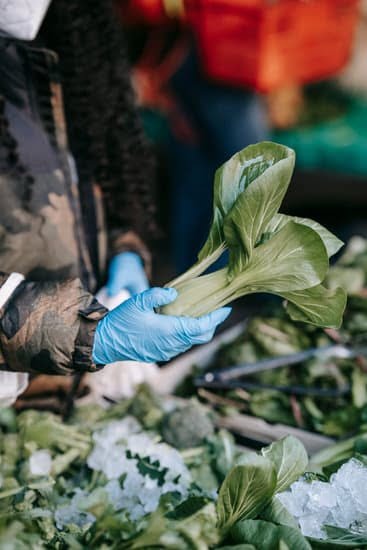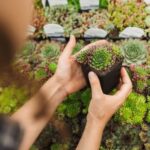Are you looking for gardening design ideas to enhance the look and feel of your garden? Good gardening design is essential for creating a beautiful and functional outdoor space. Whether you have a small or large garden, there are creative and practical design ideas to suit your needs. From low maintenance designs to seasonal and eco-friendly concepts, there are numerous ways to elevate your gardening game.
In this article, we will explore the importance of good gardening design, as well as provide a comprehensive guide to various gardening design ideas. We will cover everything from small garden design ideas, including container gardening and vertical gardening, to large garden concepts such as themed gardens and outdoor living spaces. Additionally, we will delve into low maintenance, seasonal, edible, wildlife-friendly, and eco-friendly garden designs.
By incorporating these gardening design ideas into your outdoor space, you can create a visually stunning and functional garden that reflects your personal style while also supporting the environment. Whether you are a novice gardener or have been tending to your plants for years, there is something in this article for everyone who wants to elevate their garden’s aesthetic appeal and overall experience. Stay tuned as we explore the fascinating world of gardening designs.
Small Garden Design Ideas
When it comes to small garden design ideas, creativity and practicality are key to making the most out of limited space. Here are some innovative ways to maximize a small garden and transform it into a beautiful outdoor space:
- Container Gardening: Utilizing containers such as pots, hanging baskets, and window boxes can add depth and visual interest to a small garden. This method also allows for flexibility in rearranging plants and flowers based on seasonal changes or personal preference.
- Vertical Gardening: Vertical gardening takes advantage of vertical space by growing plants upwards on walls, fences, or trellises. This technique not only saves ground space but also adds a unique and eye-catching element to the garden.
- Maximizing Space: Making use of every inch of available space is crucial in small garden design. This can be achieved through clever placement of furniture, compact plant varieties, and strategic layout planning.
Small gardens may present challenges, but with the right gardening designs ideas, they can become enchanting outdoor retreats that make the most of limited square footage.
Incorporating these ideas for small gardens can help to create a visually stunning and functional outdoor area that feels spacious despite its size. Whether it’s through container gardening, vertical arrangements, or strategic use of available space, there are countless possibilities for transforming a small garden into an inviting oasis. By implementing these creative solutions, homeowners can enjoy a beautiful garden regardless of its size.
Large Garden Design Ideas
Large gardens offer a wealth of opportunities for creative and diverse design concepts to truly make the space shine. From themed gardens to creating outdoor living spaces, there are endless possibilities for maximizing the potential of a large garden.
Themed Gardens
Themed gardens are a fantastic way to add personality and charm to a large outdoor space. Whether it’s a traditional English garden, an exotic tropical paradise, or a serene Japanese zen garden, themed gardens can transport visitors to another world. Consider incorporating elements such as specific plantings, architectural features, or water elements that align with the theme to create a cohesive and visually stunning environment.
Outdoor Living Spaces
Large gardens provide the perfect canvas for creating unique outdoor living areas. This can include patios, pergolas, fire pits, outdoor kitchens, or even cozy seating nooks nestled among lush greenery. By carefully planning the layout and flow of these spaces, you can create an inviting atmosphere for relaxation and entertaining while seamlessly integrating them with the natural beauty of the garden.
Creating Focal Points
Focal points serve as visual anchors that draw attention and create interest in the garden. Large gardens present ample opportunities for creating impactful focal points, whether it’s through sculptural elements, impressive specimen plants, or eye-catching architectural features like gazebos or arbors. These focal points can help guide visitors through the space while providing moments of delight and surprise.
When creating designs for large gardens, incorporating themed gardens, outdoor living spaces, and focal points can elevate the overall experience and enjoyment of the outdoor space. By carefully considering these design concepts along with personalized touches and thoughtful planning, large gardens can truly become magnificent havens of beauty and tranquility.
Low Maintenance Garden Designs
For those who want a beautiful garden without the hassle of constant upkeep, low maintenance gardening designs are the perfect solution. One popular option is to incorporate native plantings into the garden design. Native plants are well-suited to the local climate and soil conditions, making them easier to care for than non-native species.
They also require less water and maintenance, making them a sustainable choice for a low maintenance garden. When choosing native plants for your garden, consider factors such as sunlight, soil type, and water availability.
Another excellent low maintenance gardening design idea is xeriscaping. This approach focuses on using drought-tolerant plants and strategic landscaping techniques to create a beautiful, water-efficient garden. By incorporating xeriscaping principles into your garden design, you can reduce the need for irrigation and minimize ongoing maintenance tasks such as mowing and fertilizing. Additionally, xeriscaping can help conserve water resources and support environmental sustainability.
Incorporating elements of both native plantings and xeriscaping into your garden design can result in a stunning landscape that requires minimal upkeep. By carefully selecting suitable plant species and implementing water-wise landscaping techniques, you can create a low maintenance garden that continues to thrive year after year with minimal effort.
| Low Maintenance Gardening Design Ideas | Description |
|---|---|
| Native Plantings | Selecting native plants suited to the local climate and soil conditions can reduce water usage and maintenance tasks. |
| Xeriscaping | Incorporating drought-tolerant plants and water-efficient landscaping techniques can create a stunning yet low-maintenance garden. |
Seasonal Garden Designs
Designing a garden that looks beautiful throughout the year is a goal for many gardening enthusiasts. With careful planning and consideration of seasonal blooms and foliage, it’s possible to create a stunning and ever-changing landscape. Here are some ideas for designing a seasonal garden that will bring beauty to your outdoor space no matter the time of year:
- Incorporate a mix of plants that bloom or change foliage in different seasons. This could include flowering trees and shrubs for spring, colorful annuals for summer, foliage with vibrant fall colors, and winter-blooming plants.
- Plan your garden layout to ensure there is visual interest in every season. This may involve strategically placing focal points such as sculptures or architectural features, as well as considering the varying heights and textures of different plants throughout the year.
- Utilize hardscaping elements such as pathways, patios, and retaining walls to complement the seasonal changes in your garden. For example, incorporating warm-toned paving stones can enhance the autumnal colors of surrounding foliage.
By carefully selecting and arranging plants, creating focal points, and integrating hardscaping elements, you can design a garden that remains visually appealing throughout the year. With these ideas in mind, you can create a dynamic and ever-changing outdoor space that provides enjoyment in every season.
Additionally, consider adding elements such as bird feeders or birdbaths to attract wildlife even when plants are not blooming. This can add another layer of interest to your seasonal garden design while also providing support for local wildlife populations.
Edible Garden Designs
When it comes to gardening designs ideas, creating an edible garden is not only practical but also aesthetically pleasing. One popular design concept for productive and attractive edible gardens is raised beds. These raised structures provide better drainage, warmer soil temperatures, and easier access for planting, weeding, and harvesting. Additionally, raised beds can help keep pests away from your precious produce while adding visual interest to the garden.
Companion planting is another innovative technique in edible garden design. By strategically planting compatible fruits, vegetables, and herbs together, you can maximize growing space while naturally deterring pests and attracting beneficial insects. For example, interplanting tomatoes with basil can improve the flavor of the tomatoes while repelling harmful insects. This gardening practice not only enhances the productivity of the garden but also contributes to its overall beauty with a diverse array of plants coexisting harmoniously.
Incorporating edible landscaping into your garden design is yet another creative way to make your space both beautiful and functional. Imagine replacing traditional ornamental shrubs with blueberry bushes or mixing in colorful Swiss chard among your flower beds.
With this approach, you can harvest fresh produce alongside your flowers without sacrificing visual appeal. By integrating these gardening designs ideas into your edible garden, you can enjoy a bountiful harvest while creating a visually stunning outdoor space that is both practical and environmentally friendly.
| Edible Garden Design Ideas | Description |
|---|---|
| Raised Beds | Structures providing better drainage, warmer soil temperatures and easier access for planting. |
| Companion Planting | Strategically planting compatible fruits, vegetables & herbs together for maximizing growing space and deterring pests. |
| Edible Landscaping | Incorporating edible plants like blueberry bushes & Swiss chard into traditional ornamental gardens. |
Wildlife-Friendly Garden Designs
Creating a garden that attracts and supports wildlife is not only beneficial for the environment but also adds an extra layer of beauty and interest to any outdoor space. There are various gardening designs ideas that can be incorporated to make a garden more wildlife-friendly, and these can range from creating specific habitats for certain species to strategically selecting plants that attract pollinators and other wildlife.
Pollinator Gardens
One way to attract and support wildlife in the garden is by creating a pollinator garden. This type of garden design focuses on planting flowers that provide nectar and pollen for bees, butterflies, and other pollinating insects.
By incorporating a variety of flowering plants that bloom at different times throughout the year, you can ensure a continuous food source for these important creatures. Additionally, providing shallow water sources, such as a small birdbath or shallow dish with rocks for perching, can also attract pollinators to your garden.
Bird-Friendly Plants
Another aspect of wildlife-friendly gardening design is selecting plants that specifically attract birds. This can include shrubs and trees that provide nesting areas or berries for food. Native plants are often the best choice for attracting local bird species, as they have co-evolved with these plants over time. Providing bird feeders or houses can also further encourage birds to visit and inhabit your garden space.
Wildlife Habitats
In addition to selecting specific plants, creating wildlife habitats within the garden is another important aspect of wildlife-friendly gardening design. This could mean leaving some areas of the garden undisturbed as natural habitat for insects and other creatures or installing features such as bat boxes, insect hotels, or small ponds to attract amphibians and aquatic life.
By considering the needs of various species when designing a garden space, it is possible to create an environment that supports diverse wildlife populations.
Eco-Friendly Garden Designs
In conclusion, incorporating eco-friendly gardening designs into your garden not only benefits the environment but also adds a unique and sustainable touch to your outdoor space. By utilizing sustainable materials, practicing water-wise landscaping, and implementing organic gardening practices, you can create a beautiful and environmentally conscious garden. These eco-friendly gardening design ideas are not only practical but also showcase a commitment to preserving the natural world.
Furthermore, integrating these eco-friendly elements into your garden can inspire others in your community to do the same. By setting an example with your environmentally friendly garden, you can encourage others to consider their impact on the planet and make small changes in their own outdoor spaces. Whether it’s using reclaimed materials for landscaping or creating a habitat for local wildlife, there are numerous ways to incorporate eco-friendly elements into your gardening designs.
Ultimately, by embracing eco-friendly gardening design ideas, you can create a vibrant and sustainable outdoor space that reflects your commitment to environmental stewardship. From using recycled materials for hardscaping to planting native species that require less water and maintenance, there are countless opportunities to make a positive impact through your garden design choices. By taking the time to explore eco-friendly options for your garden, you can enjoy a beautiful outdoor space while minimizing your ecological footprint.
Frequently Asked Questions
How Do I Plan My Garden Layout?
Planning your garden layout involves considering the size and shape of your space, as well as the types of plants you want to grow. Start by sketching your yard and mapping out where you want different plants and features to go.
What Is the Best Layout for a Home Garden?
The best layout for a home garden depends on your preferences and needs. Some popular options include raised bed gardens for easy maintenance, square foot gardening for maximizing space, or traditional row planting for larger plots. Consider factors such as sunlight, water access, and soil quality when deciding on a layout.
How Do I Design My Garden?
Designing your garden involves choosing the right plants for your climate and soil, creating pathways or gathering spaces, and incorporating elements like trellises or fences. Consider how you want to use the space and what aesthetic you want to achieve when designing your garden.

Welcome to my gardening blog! I am passionate about plants and enjoy sharing my knowledge and experiences with others. In this blog, I will write about everything related to gardening, from tips on how to get started to updates on my own garden projects.





